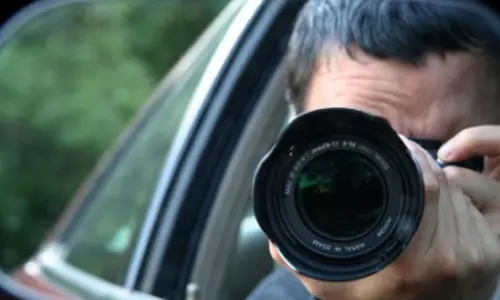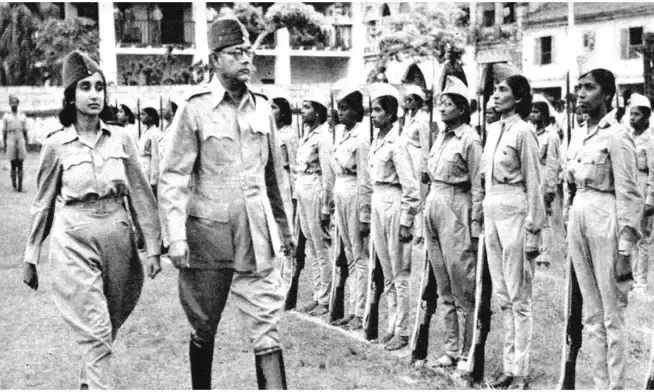
Was Subhas Chandra Bose the one who really brought independence?
text_fieldsSubhas Chandra Bose is best known for founding the Indian National Army (Azad Hind Fauj). The Orissa-born Cambridge graduate was offered a lucrative career in the Indian Civil Service under British rule. Bose refused to serve the British Raj. Instead, he was in and out of prison for much of the 1930s.
Most people believe that Indian independence is a good thing. The credit mostly goes to the Congress Party and its leader in 1947, J. L. Nehru, as well as its former leader, M. K. Gandhi. Gandhi’s ahimsa (non-violence) meant that passive resistance was mostly the means adopted of rendering India ungovernable.
In 1937, the British Prime Minister estimated India would become independent in 1980. As we know, it transpired in 1947. Had it not been for the Second World War, the date would have been well after 1947. It is very possible that Nehru, who died in 1964, would not have lived to witness the termination of Britannic suzerainty over the subcontinent.
Perhaps the contribution of Bose to the dissolution of the British Empire in India has been underestimated. In the 1930s, Bose grew impatient with the ‘softly softly’ approach of Congress, of which he was a member. He believed that British control of the Indian subcontinent had chiefly been established by force of arms, and therefore, logic dictated that it could only be disestablished by the same means. Until that time, there were no examples of peaceful decolonisation.
Since the early 20th century, there had been some physical force with Indian independence activists. But up until the 1920s, the numbers of Britons and pro-British Indians whom they had slain were minimal. Physical force separatism was a pinprick.
S.C. Bose agreed with the Britishers on one issue. He believed that democracy was unsuitable for India at that stage in its historical development. India was a subcontinent including what are now Pakistan and Bangladesh. The literacy rate was 20%, there were hundreds of languages, there were severe inter-ethnic, inter-religious and caste asperities, and communications were slow.
Very, very few people had radios or television. This was long before TV in India, and newspapers sometimes took weeks to arrive in remote areas. Therefore, the public could not be kept at pace with political developments. Subhas Chandra Bose reasoned that a benign dictatorship was the only way to govern such a gigantic country of such bewildering diversity. Hatreds between bigots of caste and faith could all too easily be exploited by demagogues.
Britain’s difficulty proved to be the Indian revolutionary’s opportunity. Bose realised that he could reach out to Britain’s foes. The Third Reich was a sworn enemy of the United Kingdom. However, in 1935, Hitler had pronounced himself in favour of continued British rule over India. Adolf Hitler was possibly saying that solely to curry favour with the Britishers whom he hoped would continue to appease him.
The Soviet Union was also bitterly hostile to the UK before 1941. Indian revolutionaries had received succour from the USSR. The Soviets ran a conference for oppressed peoples of the East, including Indians.
Bose was under house arrest in Calcutta early in the Second World War. He escaped in the middle of the night. He crossed the frontier into Afghanistan. He assumed a false identity – that of an Italian. A pale-skinned Indian could be mistaken for a relatively swarthy Italian. Bose made his way to Berlin. He had a meeting with the German Fuhrer.
Indians in the pro-British Indian Army were captured by the Wehrmacht (German Military). These Prisoners of War were offered the chance to join the Indian National Army. Some accepted. It is worth noting that some Indians refused out of genuine loyalty to the British Raj. It may be hard to believe, but some Indians believed the Raj was a good thing. They turned down better rations and conditions and a measure of freedom in favour of remaining POWs because they were votaries of the empire.
When the Japanese took Malaya and Singapore, this meant tens of thousands of Indians fell into Japanese hands. Bose returned to Asia on a German submarine. In Singapore, he formed the major unit of the Indian National Army (INA). Some Indian soldiers were men of their word and willingly faced the firing squad rather than betray their oath to the British King.
The INA crossed into India in 1943. They only took the Andaman and Nicobar Islands as well as a tiny segment of the mainland. Bose was proclamatory of ‘Azad Hind’.
Britons were worried. The majority of men of the Indian Army had turned their coats to the INA when captured by the Japanese. Could British officers in the Indian Army really trust their subordinates? A senior British officer in the police said if the Nipponese took Calcutta, they would be garlanded by the Indian Police.
The INA and its Japanese allies were bested by the British and the Indian Army in 1944. They were driven back into Myanmar after defeats at Kohima and Imphal. Some INA men who were captured were summarily executed as traitors by the Indian Army. In 1945, the whole of the INA surrendered to the British Empire Forces.
Bose fled to the Japanese occupied island of Taiwan. As Japan prepared to surrender, he did not want to be captured by the British. He resolved to fly to the USSR. Bose correctly surmised that the Soviets and the British would soon fall out. The Soviets would find a use for him in bringing an independent and pro-Soviet India. However, the Soviets might find it hard to forgive his pro-Nazi stance in a war that had led to the wilful murder of millions of Soviet civilians.
In the end, Bose’s plane crashed just after take-off, and he died immediately. There have been suggestions of sabotage by British agents or the Japanese. In 2002, some were still claiming that his death was faked and he was alive!
Some INA men were tried for high treason in Delhi in 1946. Nehru was no friend of the INA, but he was prepared to defend them. Public sympathy threatened disorder. The viceroy Lord Wavell then issued an order of nolle prosequi, and the defendants were set free.
After 1945, the British Raj could not rely on its army, navy and air force. There was a mutiny in the Royal Indian Navy. London concluded that the British Raj had to be brought to a close forthwith. Arguably, it was Bose more than Congress who did that.
Congress did not like Bose one bit. The Intelligence Bureau kept an eye on Bose’s brothers well into the 1950s.
There certainly are fans of S. C. Bose. There is Netaji Technology College. There are statues of him all around India.
Marrying an Austrian proved that Bose was not anti-white. His only child – a daughter – is still alive.












